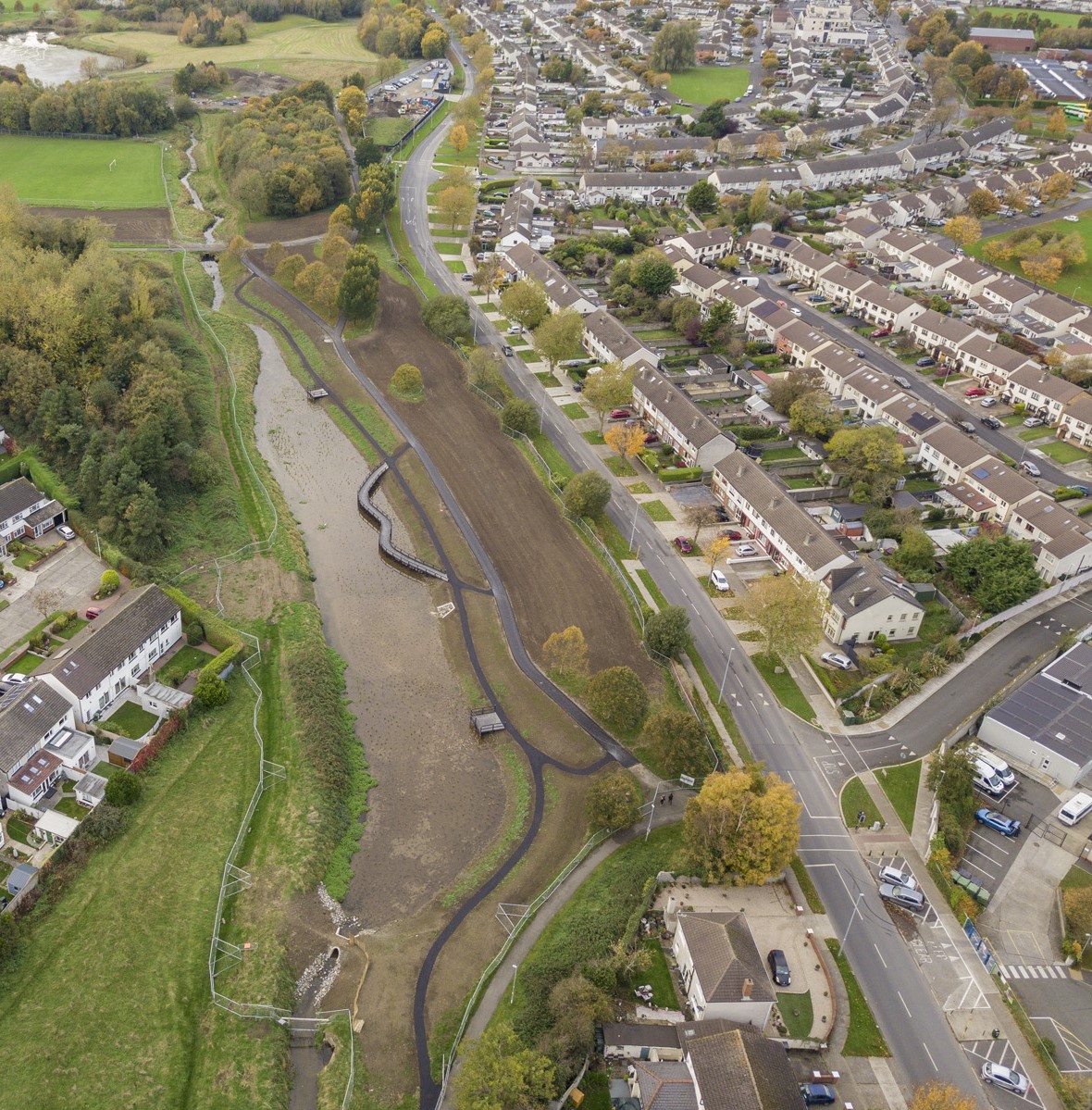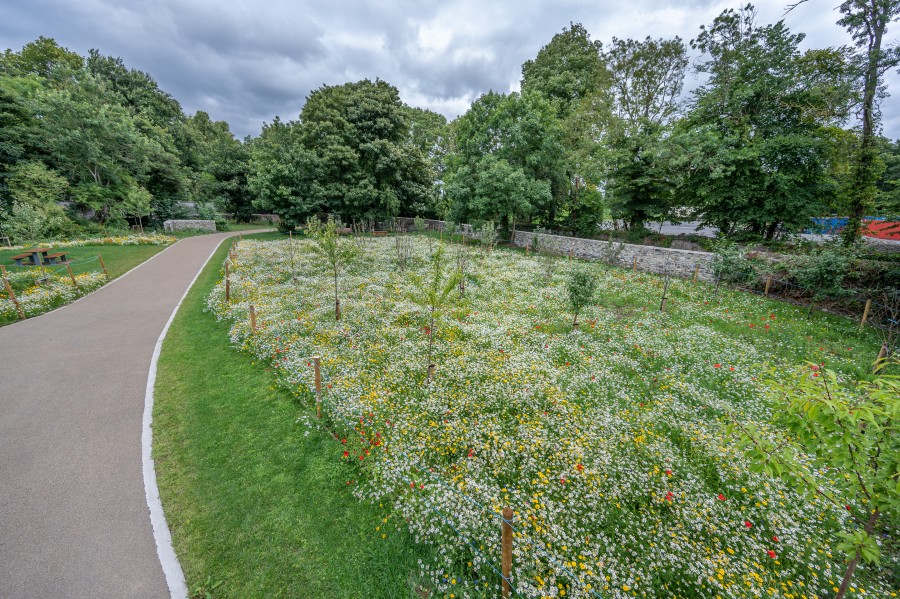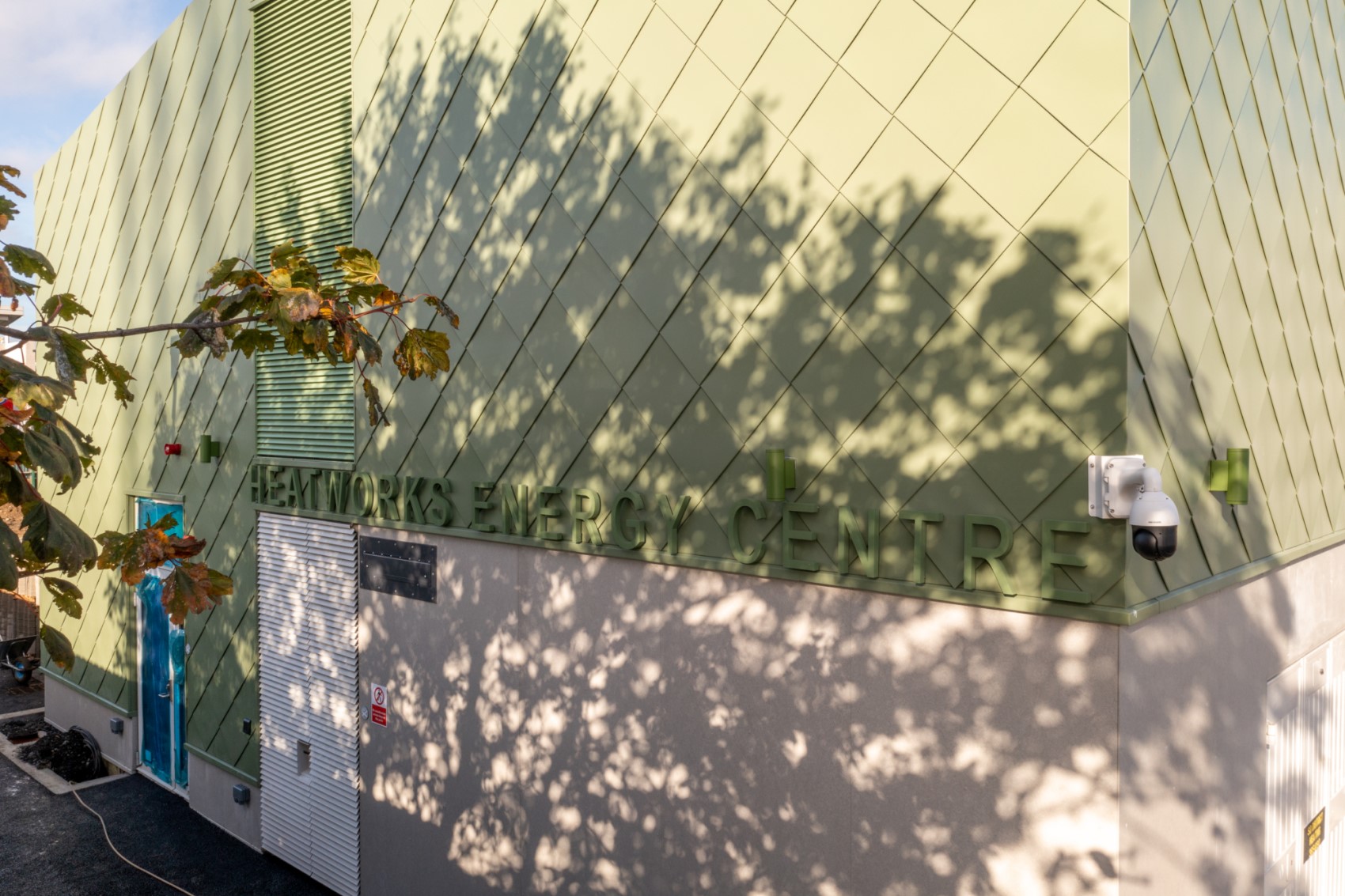Increasing Flood Resilience in South Dublin
Climate change is projected to bring a range of impacts including increased flooding due to heavier rainfall, more frequent and intense storms and prolonged periods of heat or drought.It is likely that severe weather events and sea level rise will have a considerable impact on flooding and flood risk for communities and infrastructure in Ireland. While South Dublin is not greatly exposed to the risk of coastal flooding and erosion, climate change increases the frequency and duration of heavy rainfall events and storm surges, which pose a greater risk of flooding from rain and river in vulnerable areas of the county. Extreme rainfall and weather events can also place additional pressure on the urban drainage network, which can result in flooding.
You can learn more about what actions we are taking on our dedicated storymap, such as our flood alleviation schemes, or how we are rolling out sustainable drainage systems, or read below for additional actions. see our dedicated climate action storymap.
Major Emergency Management Planning
SDCC recognises the increasing interconnection of major emergency management planning and climate action. As climate change amplifies the frequency and intensity of extreme weather events, robust emergency preparedness becomes even more critical.
SDCC's approach integrates these two vital areas, ensuring the county is not only prepared for current risks but also building resilience against future climate-related challanges. Climate change is projected to bring a range of impacts to South Dublin County, including increased flooding due to heavier rainfall, more frequent and intense storms, and prolonged periods of heat or drought. These changes can significantly exacerbate existing hazards and create new ones, placing additional strain on emergency services and community resources.
Our Response Plans to deal with severe weather and other events are reviewed on an ongoing basis with updates of plans, policies and procedures made, as required.
Integrated Constructed Wetlands

Fig 1: Integrated Constructed Wetland in Tymon Park
SDCC have constructed an Integrated Constructed Wetland (ICW) in Tymon Park, in collaboration with the Office of Public Works (OPW) on the River Poddle Flood Alleviation Scheme. The ICW was opened to the public in July of 2025 and includes a boardwalk to allow the public greater interaction with the ICW and associated biodiversity. This is the fourth ICW to be delivered by SDCC, and all are thriving. The two ICWs on the River Dodder are showing an average of 89% reduction in ammonia, 100% reduction in E. coli and 68% reduction in phosphorus in in the quality of the water being discharged.
Integrating Climate Action into Emergency Management
SDCC's climate action plan directly informs and strengthens its major emergency management planning in several key ways.
Climate Risk Assessment: The council's climate action plan includes a detailed assessment of climate-related risks, providing crucial information for emergency planning. This assessment identifies specific vulnerabilities within the county, such as areas prone to flooding or those with aging infrastructure susceptible to extreme weather. This data is then integrated into the broader emergency risk assessment process.
Scenario Planning: Climate change scenarios are incorporated into emergency planning exercises. This allows SDCC and its partner agencies to prepare for the unique challenges posed by climate-related events, such as more complex and prolonged emergencies, larger scale evacuations, and increased demand for resources.
Infrastructure Resilience: SDCC's climate action plan prioritizes investments in infrastructure resilience, recognizing that robust infrastructure is essential for effective emergency response. This includes upgrading flood defences, improving drainage systems, and strengthening critical infrastructure like hospitals and emergency services facilities. Resilient infrastructure minimizes the impact of extreme weather events and facilitates a faster recovery.
Resource Management: Climate change can strain resources during emergencies. SDCC's climate action plan addresses resource management by promoting sustainable practices and investing in resources that are adaptable to changing conditions.
Nature-Based Solutions: SDCC's climate action plan incorporates nature-based solutions, such as green infrastructure and tree planting, which can play a vital role in both climate mitigation and adaptation. These solutions can help reduce flood risk, provide shade during heatwaves, and enhance community resilience. They also contribute to carbon sequestration, mitigating the impacts of climate change.
Maintaining our Gullies for Flood Resilience
SDCC continues to progress its gully maintenance plan, with a contractor employed to maintain gullies across South Dublin. 3059.36 tons of waste were cleared from gullies across South Dublin in 2024.
Sustainable Drainage Systems (SuDS)
To address water management and mitigate flood risks, SDCC has made its "Householder's Guide to Sustainable Drainage Systems (SuDS)" and "Sustainable Drainage Explanatory Design and Evaluation Guide” (aimed at Developers) readily available online.
The "Householder's Guide" offers practical advice for homeowners to incorporate SuDS features into their properties, such as rain gardens, permeable paving, and water harvesting.
The "Sustainable Drainage Explanatory Design and Evaluation Guide" provides detailed technical guidance for professionals, ensuring compliance with regulations and best practices for sustainable drainage.

Fig 2: Sustainable Drainage Systems (SuDS)
To find out more on SuDS and what you can do to incorporate SuDS please click here.
Key Flood Resilience Data


